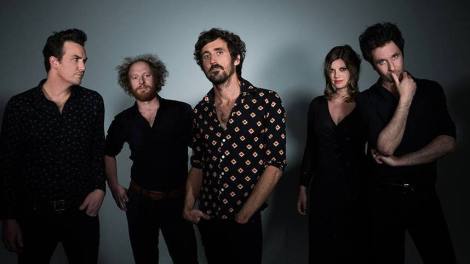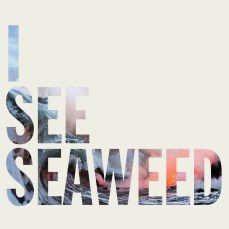 After their monumental 2008 record Havilah, it was hard to know where The Drones would go next. But they returned this year with their sixth album, I See Seaweed – another colossal musical journey.
After their monumental 2008 record Havilah, it was hard to know where The Drones would go next. But they returned this year with their sixth album, I See Seaweed – another colossal musical journey.
It was no great surprise that The Drones continued their trend of instant classics. Each of their six records have been gushed over by music journalists to the point where a reader could be forgiven for thinking each pundit was related to a band member.
But the praise is justified. I See Seaweed explores singer and principal songwriter Gareth Liddiard’s penchant for long pieces of music.
Many of the tracks build in cinematic atmosphere until they explode into the frenzied maelstroms that The Drones construct like no other musical act on the planet.
“It’s got that epicness,” Liddiard says of the new album. “We’ve always kind of had that, but I think the full-on noisy rock ‘n’ roll madness is moving to the background and the ‘epic’ thing is coming forward. We always want to do something we haven’t done in the past.”
 I See Seaweed‘s stand-out tracks employ dizzying repetition – songs like Nine Eyes andLaika – spat in Liddiard’s vitriolic, razor sharp poetic delivery. Their structure is reminiscent of the Kevin Carmody song River of Tears, which is frequently covered by The Drones.
I See Seaweed‘s stand-out tracks employ dizzying repetition – songs like Nine Eyes andLaika – spat in Liddiard’s vitriolic, razor sharp poetic delivery. Their structure is reminiscent of the Kevin Carmody song River of Tears, which is frequently covered by The Drones.
“Back in the day, bands like The Yardbirds used to call those songs ‘rave ups’,” Liddiard says. “We used to do something similar called From Black to Communist, which is just one chord. It’s the full-on rock ‘n’ roll equivalent of River of Tears – it just goes and goes and goes. It builds into madness, we’ve always done that. It’s fun – the MC5 would do it, and The Dirty Three would do it – just trying to get the wheels off the ground, you know?”
After Havilah, Liddiard made a stark, stunning acoustic record called Strange Tourist, that cemented him as Australia’s most important songwriter. But after extensive solo touring, the skinny singer with the gravelled voice was ready to pick up his electric guitar again.
“After Strange Tourist, I didn’t want to hear anymore acoustic guitar,” Liddiard says. “I had been there and done that. It was ‘folk’ music, but I don’t like that word, really. It was just the traditional acoustic thing, and I kind of perverted it. So I wanted to do massive electric guitar [music] but without being too old school or classic about it. Just to f*** up [the old school sound] – wherever we go we just want to f*** it up.”
The chaos begins with a song idea from Liddiard, who brings it to the band. The concepts are in varied states of completion when guitarist Dan Luscombe, bassist Fiona Kitschin and drummer Mike Noga sink their teeth in.
“I come in with a pretty good game plan and give it to everyone,” Liddiard says. “It’s not a super tight game plan, but it’s a general idea. Everyone does their thing and we see what happens. If it sounds shit we do something else.”
I See Seaweed required another layer of sound and saw the inclusion of a new member – keyboardist Steve Hesketh.
“It seemed like the natural thing to do,” Liddiard says. “I had been writing songs for four parts – two guitars, bass and drums – for yonks. You can kind of run out of ideas. We could do totally avant garde noise, with the guitars, but you have still got to move yourself and move people. So if we didn’t want to tamper with the guitars then something else had to give and that was a piano. You can do anything on [the piano] and we hardly got to the bottom of it with this album. Next record we’ll go further with it.”
The Drones needed a particular style of player – someone who could speak their musical language but also be diplomatic.
“Someone who can take criticism,” Liddiard chuckles. “Because we all sit around and someone does something and you go, ‘Yeah… it’s a bit shit.’ Ten years ago you would yell at each other but now when you go, ‘It’s a bit shit’ the [other person] says, ‘Ok, whatever, I’ll try something else.’ That takes a lot of learning. Stevie’s pretty good at that – he gets over it pretty quick. You want someone that can deal with strange, left-of-centre ideas. And you want someone you can giggle with and he’s a funny, funny guy. That’s the main thing – morale is a big deal in a band, because if you’re not enjoying it you won’t sound good.”
Liddiard is The Drones’ visionary, but he admits that he often requires his band mates to realise those musical visions.
“The later the song comes along in the making of the album, the more input they’ll have because I’ll be running out of ideas,” Liddiard says. “I’ll come in with a bed of bones and go, ‘Right, make this sound good.’ But early on I’ll have concepts.”
And gone are the days when The Drones could road test new ideas while on tour. The rise of mobile phone video cameras and Youtube has meant that bands have lost some control over what material reaches a wide audience. It has forced The Drones to only play songs live when they are polished and well rehearsed.
“You record a song as well as you possibly can and then you put the album out and go on tour,” Liddiard says. “You play that song 20 times and it’s better than it was recorded. But back in the day when bands started, before their first album, they could play a song live a million times and get really good at it. Now if you play Song X for the first time and it’s a bit of a disaster, someone will put it on Youtube. Then when you actually release the proper version of Song X a year down the track, the shit version will have a million views and the good version will never get seen. So if we haven’t recorded a song, we won’t play it live. Five or six years ago that wasn’t the case.”
I See Seaweed is out now.